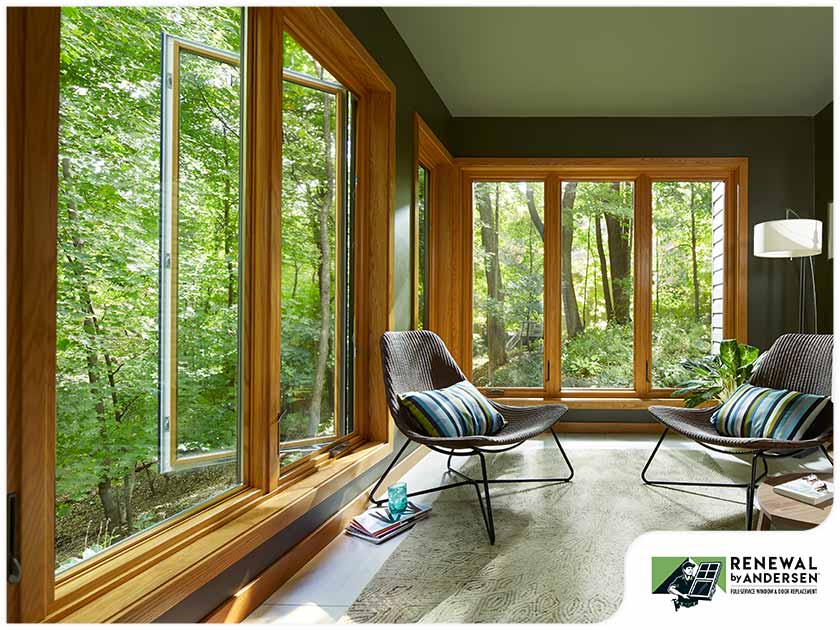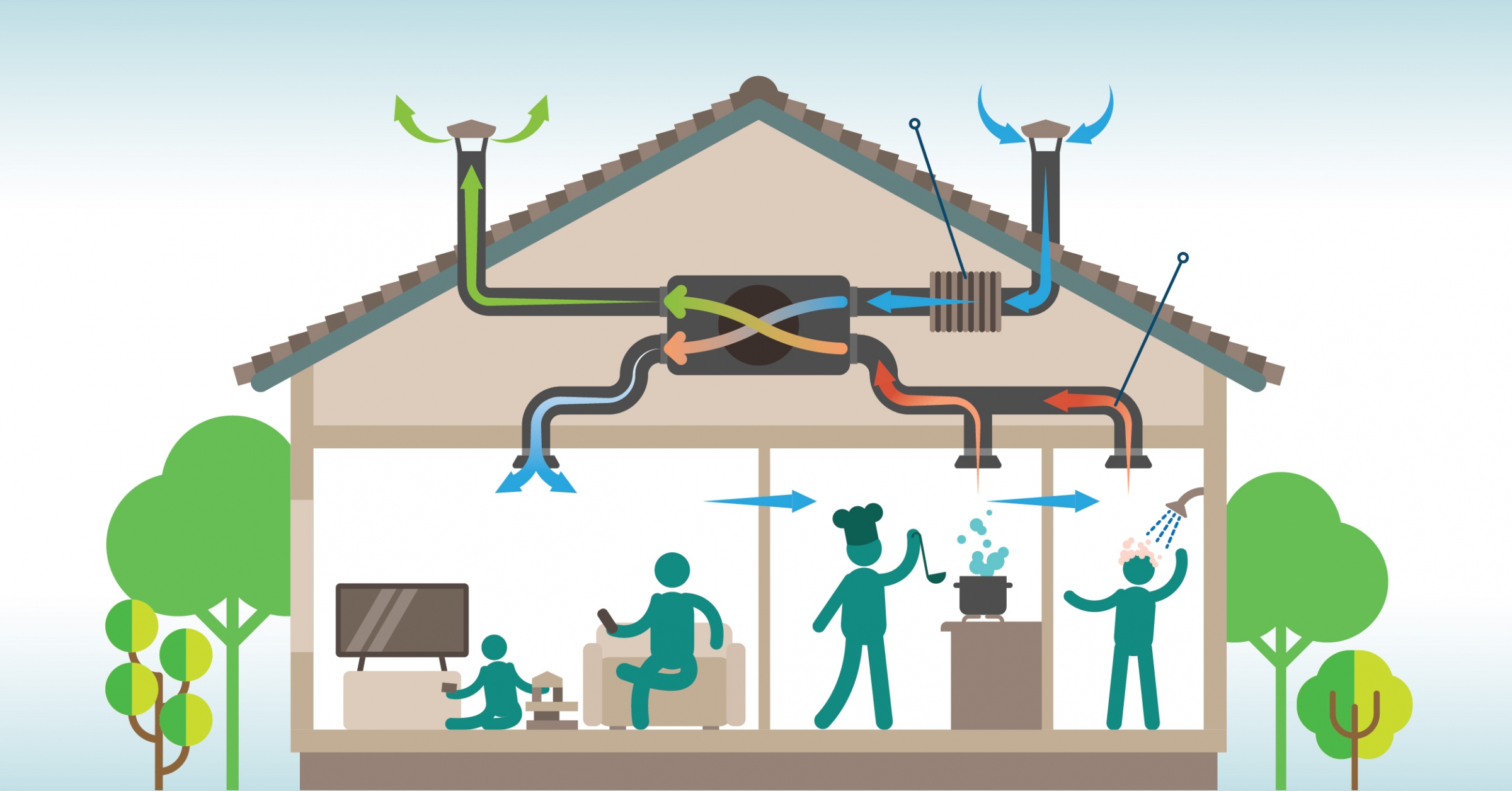Exploring Ingenious Solutions for Optimal Home Air Flow Systems
Home air flow plays an important function in maintaining health and wellness and convenience within living areas. With advancements in modern technology, cutting-edge solutions are emerging to maximize these systems. Smart ventilation, power healing ventilators, and advanced purification are reshaping just how air quality is taken care of - Home Ventilation Melbourne. Nevertheless, the integration of these technologies increases concerns about their effectiveness and flexibility in different home settings. What implications do these growths hold for future living requirements?
The Relevance of Home Air Flow for Health and Convenience
Frequently ignored, home ventilation plays a necessary function in preserving both health and wellness and comfort within domestic rooms. Sufficient air flow is important for the circulation of fresh air, which helps to weaken indoor pollutants such as unstable organic compounds, irritants, and smells. Without appropriate airflow, these pollutants can collect, bring about respiratory system problems and other health and wellness issues. In addition, reliable air flow adds to controling humidity degrees, stopping mold growth and structural damages. By making sure a balanced exchange of air, locals can take pleasure in a much more pleasant indoor setting, enhancing total health. Furthermore, appropriate ventilation can boost power performance by reducing the need for excessive heating or air conditioning, inevitably resulting in reduced energy bills and a much more lasting home.
Smart Air Flow Systems: Harnessing Modern Technology for Performance
Smart air flow systems stand for a significant innovation in home air management, leveraging IoT combination for enhanced control. These systems not just advertise energy effectiveness however likewise offer remote monitoring capacities, permitting individuals to maximize their interior atmospheres flawlessly. By taking advantage of innovation, homeowners can attain better air top quality while lowering energy intake.
IoT Integration Benefits
Just how can IoT assimilation change traditional ventilation systems right into highly reliable clever remedies? By including Web of Points (IoT) modern technology, ventilation systems can accomplish real-time monitoring and control, boosting their functional performance. Sensors positioned throughout a home gather information on air quality, temperature, and moisture, permitting for automated changes based upon present problems. This instant responsiveness brings about enhanced interior air quality and comfort levels. On top of that, IoT-enabled systems can connect with various other smart home devices, creating a cohesive ecological community that enhances energy usage. Customers can likewise gain access to and handle their ventilation systems from another location using mobile phones, providing convenience and boosted control. In general, IoT assimilation stands for a considerable improvement, bringing knowledge and versatility to conventional air flow techniques.
Power Efficiency Includes
As power performance comes to be a vital focus in modern-day home design, progressed ventilation systems provide cutting-edge attributes that considerably decrease energy intake. These smart ventilation systems utilize sensing units to keep an eye on interior air temperature level, top quality, and humidity degrees, instantly adjusting air flow to preserve suitable conditions. By utilizing energy healing ventilators (ERVs), they capture and reuse power from outward bound air, reducing heating and cooling down needs. Variable rate fans even more boost efficiency by changing their procedure based upon real-time demands, avoiding unnecessary energy waste - Home Ventilation Melbourne. Furthermore, programmable timers and tenancy sensing units ensure that air flow runs just when needed, adding to reduced energy costs. Collectively, these functions represent a significant advancement in producing energy-efficient and lasting living environments
Remote Surveillance Abilities
What benefits do remote tracking capabilities bring to modern home ventilation systems? These capacities allow home owners to track indoor air high quality and system performance in actual time, improving general efficiency. By supplying data on temperature, air, and humidity contaminants, smart air flow systems allow aggressive changes, making certain perfect conditions. Additionally, remote surveillance assists in maintenance alerts, determining potential problems before they escalate, consequently lowering fixing prices and downtime. Customers can access system analytics via mobile applications, permitting practical control even when far from home. This technical assimilation not only advertises power efficiency however additionally adds to a healthier living setting. Inevitably, remote surveillance capacities stand for a substantial improvement in home air flow, aligning with the expanding need for smart home modern technologies.
Energy Recovery Ventilators: Maximizing Energy Savings
Power healing ventilators (ERVs) play an important function in enhancing home power effectiveness through efficient warmth exchange. By moving thermal power between inbound and outbound air, these systems markedly minimize total power intake. This ingenious technique not only keeps interior air high quality however also contributes to reduce utility costs.
Performance of Warm Exchange
While maintaining interior air quality is essential for wellness and comfort, the performance of warmth exchange in energy recovery ventilators (ERVs) plays a vital role in making best use of power financial savings. The primary function of an ERV is to transfer warmth and dampness between outward bound and inbound air streams, which enhances interior problems while reducing energy loss. High-efficiency heat exchangers can considerably lower the tons on home heating and cooling systems by reclaiming power that would certainly otherwise be squandered. article The performance of these systems is frequently determined by their core temperature level currency exchange rate, which can vary based upon style and materials utilized. By focusing on advanced warmth exchange innovations, homeowners can boost their ventilation systems, causing enhanced power performance and expense decreases in time.
Decreased Power Intake
Reducing energy usage is a vital benefit of power recovery ventilators (ERVs), as they effectively reuse thermal energy from exhausted air. By transferring heat in between incoming and outbound air streams, ERVs lessen the requirement for additional home heating or air conditioning, causing considerable power savings. This procedure not just minimizes utility prices however additionally minimizes the environmental effect connected with greater power use. Additionally, ERVs maintain consistent indoor air quality without endangering thermal comfort, producing a balanced living environment. By incorporating ERVs right into home ventilation systems, property owners can achieve higher power efficiency, enabling a lasting approach to indoor air management while benefiting from lower energy expenses. Inevitably, ERVs stand for a compelling service for energy-conscious customers.
Advanced Filtration Technologies for Cleanser Indoor Air
As indoor air high quality comes to be significantly identified as a vital part of health and wellness and well-being, advanced filtering technologies are becoming vital devices for ensuring cleaner atmospheres. These innovations consist of high-efficiency particle air (HEPA) filters, turned on carbon filters, and electrostatic precipitators, each developed to properly catch air-borne pollutants, allergens, and unpredictable natural compounds (VOCs) HEPA filters can catch particles as small as 0.3 microns, significantly minimizing irritants like dust termites and animal dander. Activated carbon filters stand out in adsorbing odors and chemical vapors, contributing to a fresher interior atmosphere. In addition, electrostatic precipitators use electric charges to eliminate bits, supplying an energy-efficient alternative. By incorporating these innovative filtration systems, home owners can boost interior air top quality and advertise healthier home.
The Role of Sensing Units in Enhancing Air Flow and Quality
Exactly how can sensing units change the management of indoor air quality? Sensors play a vital role in improving airflow and enhancing interior settings. By continuously keeping track of elements such as humidity, temperature level, and degrees of toxins, they give read real-time data that informs air flow systems. This details allows computerized modifications to airflow, ensuring ample flow and minimizing the build-up of impurities. In addition, progressed sensing units can detect particular air quality problems, motivating prompt reactions to improve comfort and health. The combination of these gadgets right into air flow systems permits for a more responsive and effective management technique, reducing power intake while keeping excellent air top quality. Ultimately, sensing units function as a vital element in creating healthier indoor areas through precise air flow regulation.
Integrating Air Flow With Smart Home Systems
While lots of home owners seek benefit and efficiency, incorporating air flow systems with clever home innovation provides a cutting-edge remedy to taking care of interior air top quality. By attaching ventilation devices to smart home hubs, residents can automate air quality monitoring and control air movement based on real-time data. These systems can react to changes in temperature, humidity, and pollutant degrees, guaranteeing suitable interior problems. Smart thermostats can website link operate in tandem with air flow systems to boost energy effectiveness, minimizing prices while keeping convenience. Homeowners can also remotely control their air flow setups via mobile applications, giving versatility and tranquility of mind. Eventually, this combination not just streamlines administration yet substantially improves the general living setting, making it a valuable enhancement to contemporary homes.
Future Patterns in Home Ventilation Solutions
Arising innovations and enhanced understanding of indoor air high quality are forming the future of home ventilation services. One substantial pattern is the assimilation of expert system, allowing systems to adjust air flow based on real-time data and tenancy patterns. Additionally, energy recovery ventilators are gaining grip, offering reliable air exchange while decreasing power loss. Making use of environment-friendly products and designs is also on the increase, straightening with sustainability objectives. Smart sensors that monitor pollutants and moisture degrees are becoming criterion, allowing house owners to preserve ideal indoor settings. Scalable and modular systems are arising, giving customizable choices for different home dimensions and configurations. Together, these advancements promise to enhance comfort, efficiency, and health in domestic areas
Regularly Asked Inquiries
How Usually Should I Tidy My Home Air Flow System?

The regularity of cleaning up a home air flow system differs based upon usage and environment. Typically, it is recommended to clean up the system every three to six months to maintain perfect air quality and system performance.
Can Poor Air Flow Reason Mold Development Indoors?

What Are the Indicators of Inadequate Home Ventilation?
Indicators of inadequate home air flow consist of relentless smells, raised moisture degrees, condensation on windows, visible mold growth, and a basic sensation of stuffiness. These signs commonly recommend that air blood circulation wants for keeping a healthy interior setting.
How Can I Improve Ventilation in Older Residences?
To boost air flow in older homes, one might take into consideration installing exhaust followers, making use of all-natural air flow through home windows, sealing voids for far better air control, and integrating air purifiers to boost indoor air quality successfully.
Are DIY Ventilation Solutions Effective and Safe?

Smart air flow, power recovery ventilators, and advanced purification are improving exactly how air top quality is managed. As power efficiency becomes a critical focus in modern-day home design, progressed ventilation systems use ingenious functions that greatly decrease power intake. By incorporating ERVs right into home ventilation systems, property owners can achieve better power effectiveness, allowing a sustainable strategy to interior air monitoring while benefiting from reduced energy costs. The combination of these devices into air flow systems enables for a more receptive and efficient management approach, minimizing power usage while preserving ideal air quality. While many homeowners seek ease and performance, incorporating air flow systems with clever home innovation supplies an innovative remedy to taking care of interior air high quality.